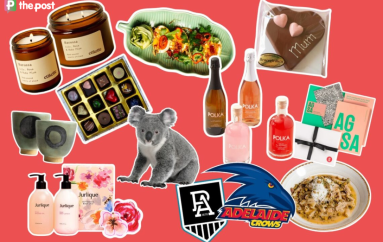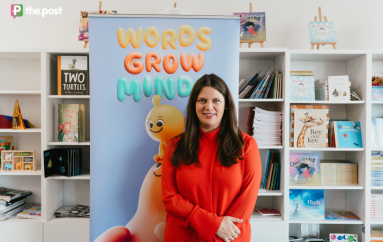In the studio with Kate Kurucz
From her studio space in Stepney, painter-turned-animator Kate Kurucz is piecing together a personal story of migration, loneliness, and more than a hint of movie magic.

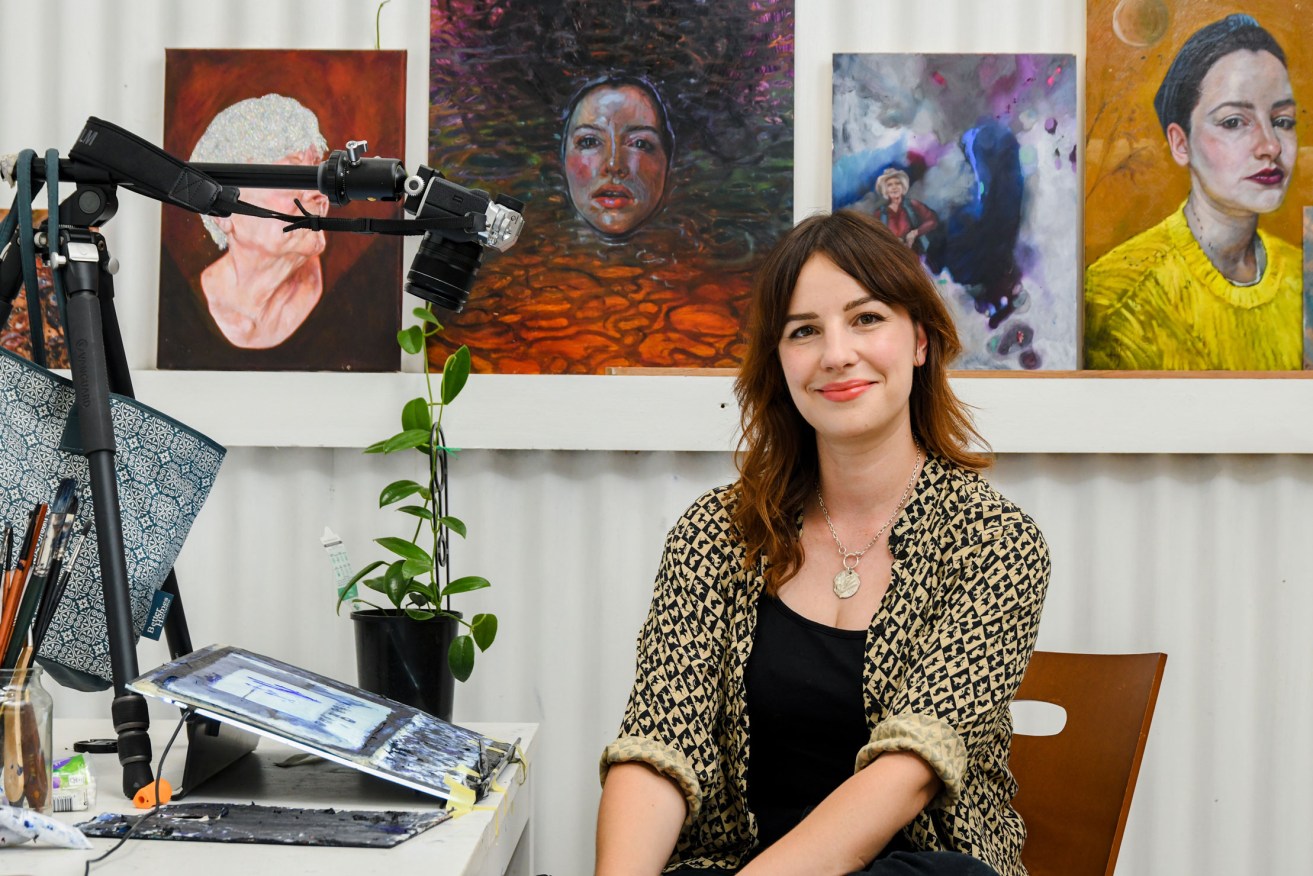
Kate Kurucz is surrounded by artwork both old and new in her workspace at Stepney’s Central Studios. Photo: Jack Fenby / InReview
Up the back of Stepney’s Central Studios, under a stunning beam of sunlight that pours in through a gap in the corrugated iron roof, Kate Kurucz snatches a moment of calm halfway through the install of her next exhibition at Adelaide Central School of Art.
Kurucz hasn’t been here long, having shifted from down the hall when this space – with that excellent sunbeam – became available a month ago. Along the back wall is a row of oil paintings, joined by a scattering of books and artefacts, and a colourful replica of Douglas Mawson’s balaclava hand-knitted by her mum for an earlier work, Self-portrait as someone of note. For the most part, however, these older pieces are just set-dressing for a studio that’s still new (“just to make it feel more homey, for myself,” Kurucz says).
The real work has been happening away from the easel, hunched over a “cheapy little Officeworks lightpad” with a digital camera fixed in position overhead. On top of the light box is a pane of glass salvaged from an old picture frame, which has been Kurucz’s sole working surface for the past seven months. The result is Haza, a four-and-a-half-minute animated video that forms the core of the new exhibition.
“It was probably about 2800 individual frames that I painted,” she says of the vivid, ultramarine blue-on-white paintings that comprise the work. “I think my best day I did 40 frames – and the worst day I did one very bad frame.
“It’s really different in some ways, because it’s digital work. It is kind of hand-painted, but it’s a marriage between analogue and digital, which is why it felt like a natural progression, and a natural kind of way to dive into that way of art-making.”
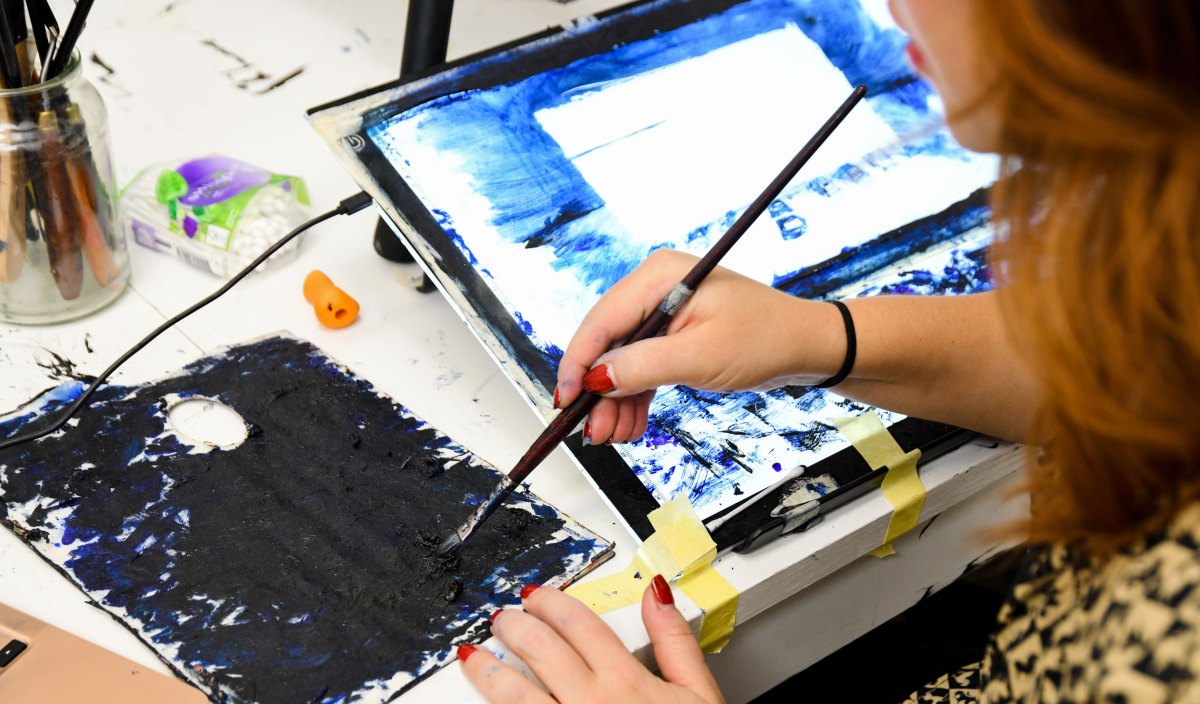
‘It’s a marriage between analogue and digital,’ Kate Kurucz says of the process used to create the animated video at the centre of her latest exhibition. Photo: Jack Fenby
Unlike traditional cel animation, in which the artist drafts the first and final frames then fills in the gaps, as a first-time animator Kurucz took a more exploratory approach – with some help from Netherlands-based artist Tess Martin as part of a Guildhouse Catapult mentorship.
“So the idea is just that you animate forward,” she explains. “I’m just always moving forward; it gets obliterated, you do another version of it, you’re always just moving the image forward.”
Kurucz might be animating forwards, but Haza is also about looking back. The four-minute loop draws from stories and photographs shared by her grandmother, and evokes her family’s experience of being uprooted from Hungary to Australia over half a century ago.
“They first immigrated from Hungary in 1957 as a young family,” she says. “They couldn’t afford to go to the drive-in, they didn’t have a lot of money, they couldn’t speak English. So they would park outside the fence, and then watch the films through the fence and make up the story themselves.
“And I just found that really lovely, because I love the drive-in – rest in peace. And I really love cinema, and that idea of it being a way to process your own story, or a way of empathising with your own story through the characters on screen.”
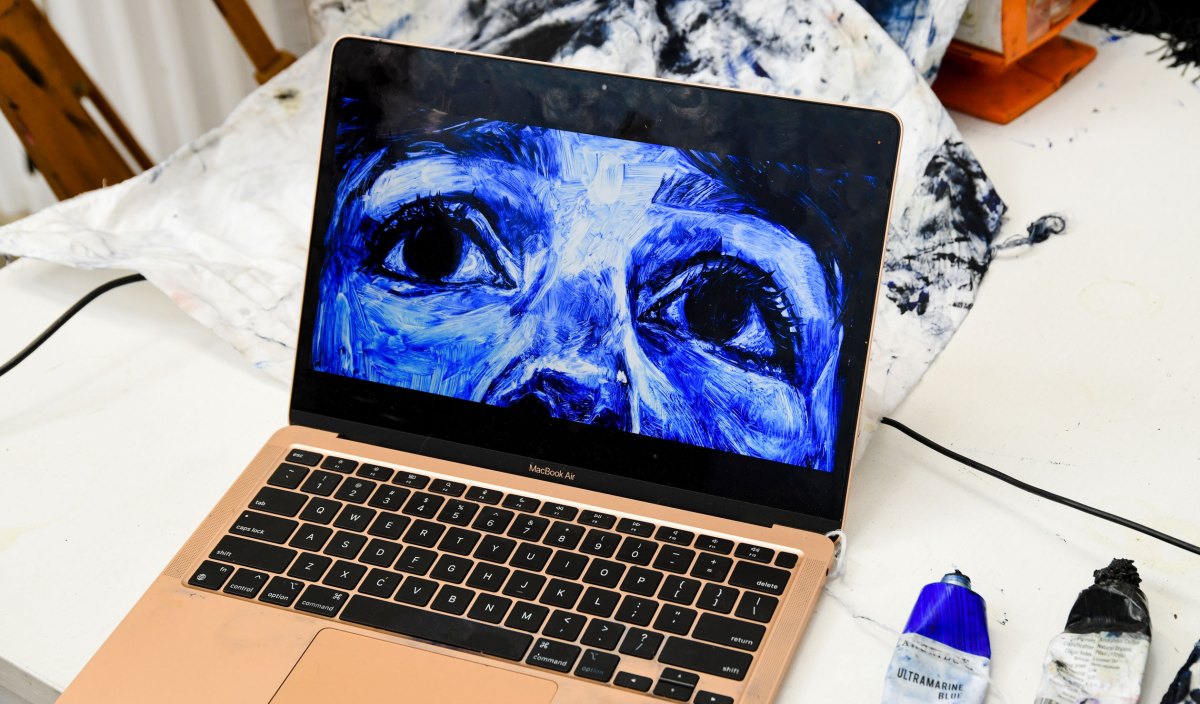
Detail of one of the vivid blue-on-white paintings that comprise Haza. Photo: Jack Fenby
The film, which riffs on aspects of the migrant experience – like newspapers full of an unreadable foreign language – places Kurucz as a stand-in for her grandmother. Each of its 2800 frames lean into their deeply personal, organic nature; you can see every line, every stroke that Kurucz made over that lightpad.
“The jumping off point was that story,” she explains, “but I was looking more broadly at themes of loneliness, connection, cinema.”
In the gallery, the thousands of paintings Kurucz made on that tiny glass surface in Stepney will be projected onto a 5m-wide screen. But her tribute to the drive-in era doesn’t stop there.
“A 1963 Vauxhall Victor, which is the closest I could get to a Holden of the era,” she says of the car body found on Facebook Marketplace and miraculously transplanted into the gallery space – complete with a cyclone fence pattern etched onto the windscreen.
Like many new migrants in mid-century Adelaide, one of her grandfather’s first jobs in Australia was at Holden. But it is Kurucz’s father – a boilermaker and former windscreen fitter – who has overseen the painstaking, ship-in-a-bottle feat of bringing the car into the exhibition space.
“We had to cut it apart; it went through a door – I could not have done it without my dad,” she says.
“He took out the entire engine, all the suspension, cut the roof, took out the wheels, took out the seats. Then we had the roof off, the front of the car was off, and then [we] flipped the bottom on its side and slid it through the door. Now it’s been bolted back together, [and] wheels and windshield are going on tomorrow – undoing the process.”
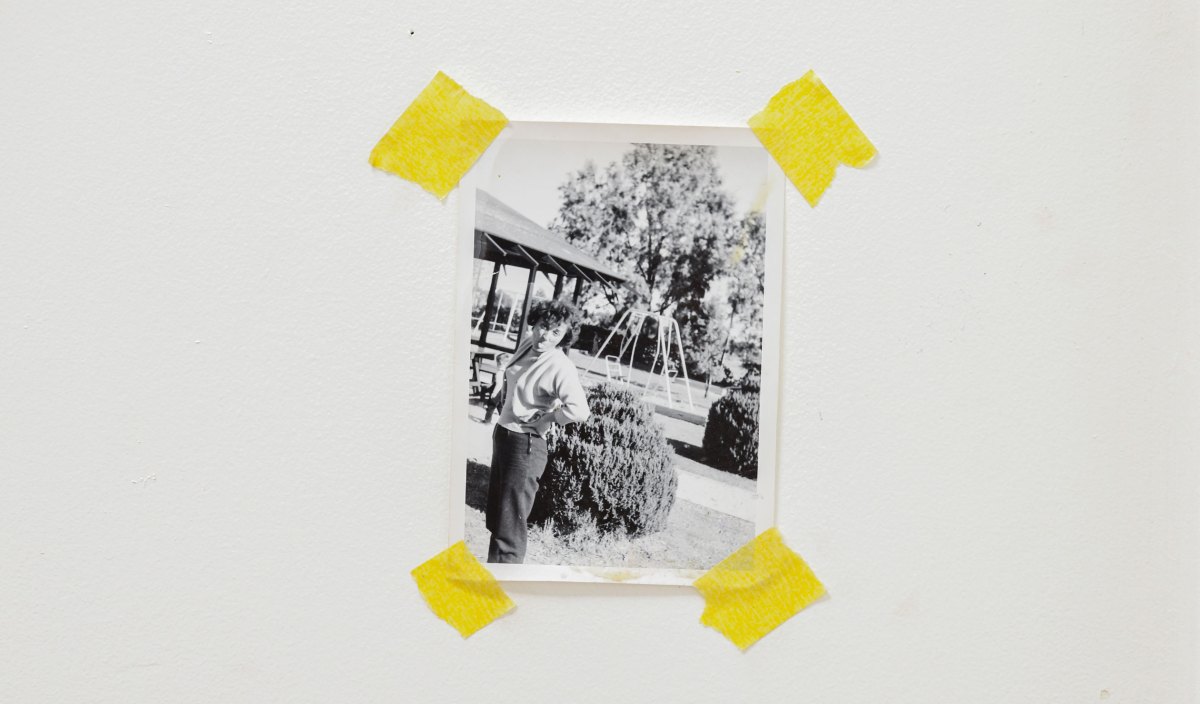
A snapshot of Kate Kurucz’s grandma, Veronika, on display in her studio. Photo: Jack Fenby
Unsurprisingly, this part of Haza’s preparation was not done in Kurucz’s Stepney studio – her mum’s driveway was the more practical option. But between all the metal and glass, and the deep family ties, it’s all fittingly in-step with the animation process. And, like, the video, it’s looking surprisingly seamless.
“The big hammer came out a few times,” she laughs. “I couldn’t believe it. It feels like a magic trick to have gotten it in there. Now [for audiences], it feels like a magic trick, going in two small doors and wondering: ‘How did this get in here?’.”
Kate Kurucz’s new immersive installation Haza will be presented at Adelaide Central Gallery until March 24, and is included as part of the 2023 Adelaide Fringe program. She will also be presenting an exhibition at Hugo Michell Gallery from August 23 to September 30. Read more about the artist’s practice on her website.
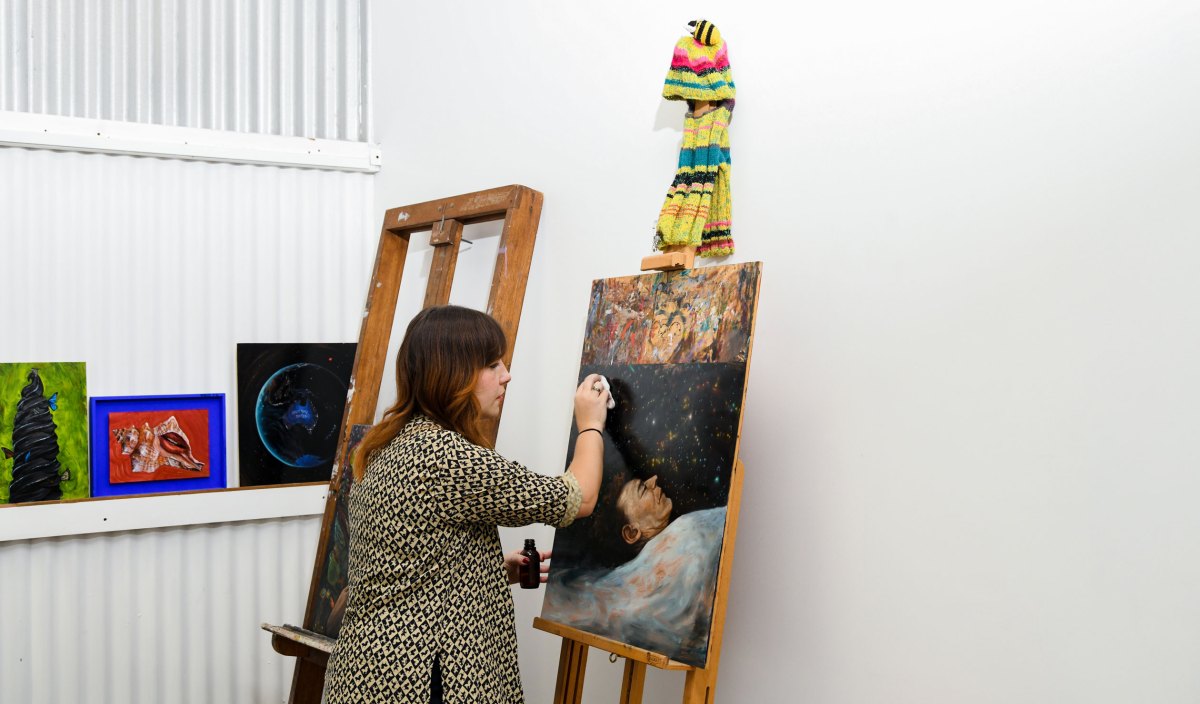
Kate Kurucz works on a painting for her exhibition later this year at Hugo Michell. The colourful replica of Douglas Mawson’s balaclava above the easel was knitted by her mum for an earlier work. Photo: Jack Fenby
In the Studio is a regular series presented by InReview in partnership with not-for-profit organisation Guildhouse. The series shares interesting stories about South Australian visual artists, craftspeople and designers, offering insight into their artistic practices and a behind-the-scenes look at their studios or work spaces. Read our previous stories here.
